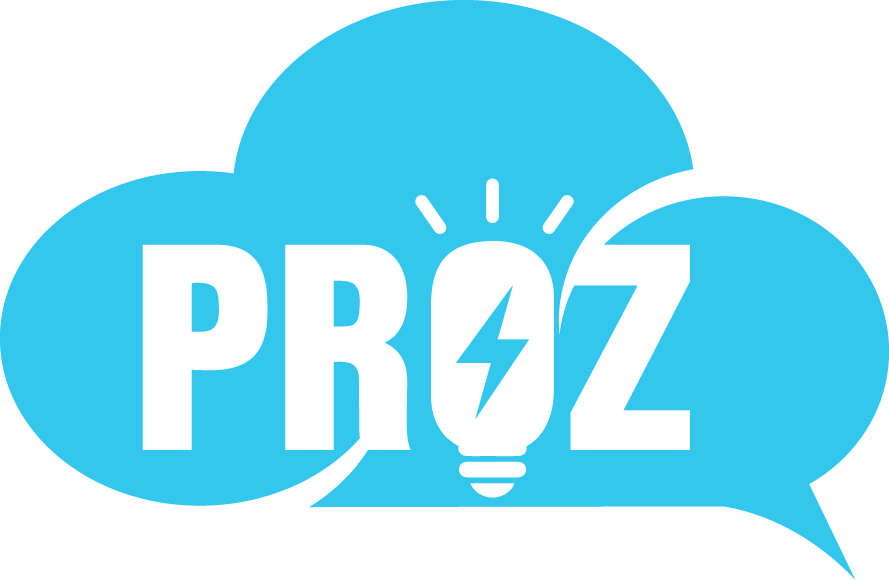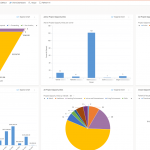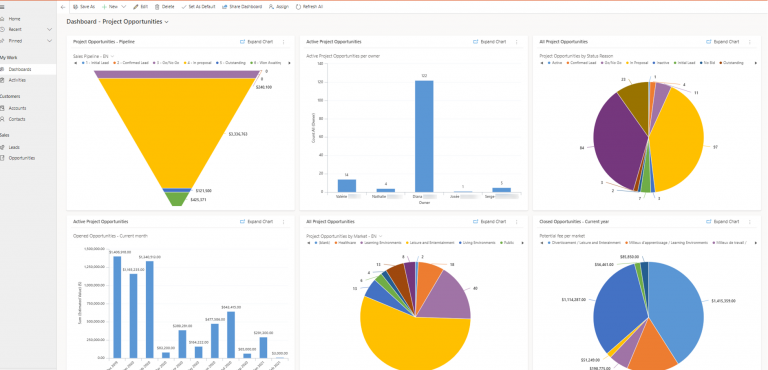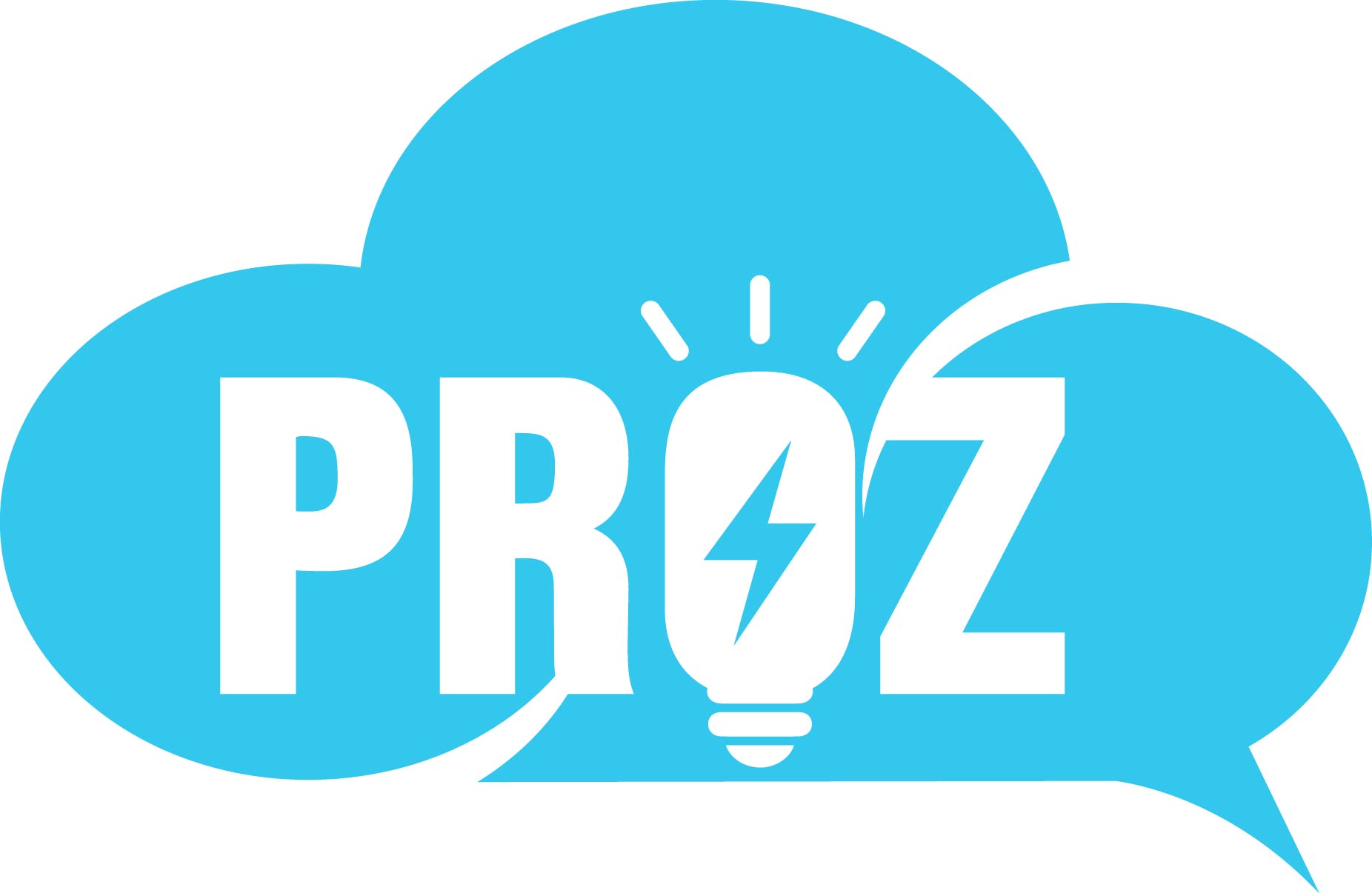The digital age is here, and it’s transforming business faster than ever. To keep up, you may need to rethink how you operate, sell, and engage with customers. Traditional systems and processes just may not be enough anymore. While many businesses are taking a calculated approach to trying out new technologies, those going all-in on digital from the start are leading the way into the future.
For small businesses, this shift feels both exciting and overwhelming. On one hand, adopting digital tools can open doors to new opportunities. On the other, it can be tricky to know where to begin. Still, the numbers are hard to ignore — 71% of small businesses now say that adopting digital tools helped them survive and grow through tough economies. This guide will help you take your first steps toward becoming a digital-first business and prepare for whatever lies ahead.
What you’ll learn:
What is a digital-first business?
A digital-first business is one that uses technology to drive every aspect of its operations. From sales and marketing to customer service and product development, these businesses use digital tools to stay efficient and competitive.
For small and medium-sized business (SMB) owners, adopting a digital-first mindset means choosing technology that supports your growth. Being digital-first is an actionable mindset as much as a shift to a specific app or technology. For example, a digital-first business uses cloud-based tools to manage its team, track inventory, and serve customers online. Everything from lead generation to financial transactions is handled digitally, increasing efficiencies and decreasing costs.
Here are the five key traits of a digital-first small business.
1. Flexibility: A digital-first business is built to handle sudden changes, like market changes or shifts in customer behavior. You should have tools that let you work from anywhere and adjust your offerings or communication channels as needed.
2. Omnichannel: Customers today expect seamless experiences across every touchpoint, and they want to interact with your business on their terms. Whether it’s social media, mobile apps, or ecommerce platforms, you need to reach customers through the channels they prefer.
3. Customer-centric: At the end of the day, your business exists to serve its customers. A seamless experience is what keeps them coming back. With the right tools, you can track customer preferences, respond faster, and create smoother interactions at every step.
4. Data-driven: A data-driven business uses customer insights to make informed decisions. Tracking customer behavior and sales trends helps you understand what works. This allows you to adjust your strategy and deliver better results.
5. Integrated: Digital transformation isn’t just about getting new tools. You have to connect your systems so they work smoothly together. When your apps and processes share data, your business delivers greater value.
Benefits of a digital-first business model
Adopting a digital-first approach allows you to build a more resilient business model. With remote and hybrid work, more people shopping online, and using social media to reach new customers, digital-first small businesses quickly adapted when doing business in person wasn’t possible.
As more small businesses move online, a digital-first strategy keeps you relevant and helps you meet customer expectations. It also makes your work more efficiently. Digital tools can automate tasks, save time, and reduce errors, so you can focus on growing your business.
This approach also improves the experience you offer your customers. You can provide personalized, 24/7 service that builds trust and loyalty. Plus, automating processes and streamlining workflows reduces operational costs, allowing you to use your resources more effectively.
Digital-first business strategies for growing your small business
Let’s look at some practical strategies to help your small business adopt a digital-first approach.
Get in the cloud
Cloud-based technologies help small businesses grow without spending big on infrastructure. You can access important tools from anywhere, making remote work and team collaboration simple. It also keeps daily operations running smoothly.
A great example of this is a customer relationship management (CRM) platform. With a CRM for your small business, you can track customer interactions, organize your sales pipeline, and send timely follow-ups. A CRM ensures that you never miss an opportunity, it centralizes all your data, helps you build stronger relationships, and close deals faster — all in the cloud.
Using cloud-based tools also saves you money. You don’t need costly servers or constant IT support. You can easily scale CRM as your business grows. As a result, you can add features or expand your operations without any hassle.
Kickstart your SMB with Starter Suite
Get started with CRM and see results from day one with Starter Suite — the all-in-one suite with the marketing, sales, service, and commerce tools you need to succeed.


Build a strong online presence
Your online presence is often the first thing customers notice about your business. A solid business foundation makes it easier for people to find you and trust your brand. You need to create a professional website, stay active on social media, and keep your business details up-to-date on platforms like Google Business Profile. These small steps can make a big difference in how customers see you.
To stand out online, focus on search engine optimization (SEO). SEO is the process of improving your website to rank higher on search engines like Google, making it easier for people to find you. SEO for small businesses is a powerful, low-cost way to attract more traffic and grow your audience.
Additionally, you can use social media to engage with your audience and share your brand story. Pair this with content marketing to establish your expertise. Blog posts, videos, and even newsletters can help you create a strong online presence that drives more people to choose your business.
Boost online sales with an ecommerce store
An ecommerce store, or a digital storefront lets you meet customers where they are — online. Small businesses can set up online stores quickly using simple templates and tools. This means you don’t need to start from scratch. For businesses that need more flexibility, platforms with composable storefronts let you mix and match features, so your store grows with your needs.
A smooth shopping experience helps build trust with your customers. Personalized recommendations, multiple payment options, and easy checkout make shopping faster and more enjoyable. Your customers will remember the convenience and keep coming back.
With ecommerce expected to drive 54% of small business revenue by 2025, having a digital storefront ensures your business can grow and succeed. Salesforce Starter enables you to launch an ecommerce store that seamlessly integrates with your existing operations. Create a personalized and connected customer experience, positioning your business for long-term success.
Create personalized customer experiences
Personalized experiences are no longer optional — with customer expectations, they’ve become mandatory. According to a McKinsey report, 71% of consumers expect companies to deliver personalized interactions, and 76% become frustrated when this expectation is not met.
For small business marketing, this means understanding what each customer wants and offering solutions that match their needs. The truth is, our data shows that 81% of customers want faster responses as technology improves, and a whopping 73% look for more personalized experiences. You have to show customers that you value them. Make sure to provide customized interactions at every stage of their customer journey.
Digital tools make this easier. For example, you can use CRM to organize customer data and track customer interactions. Automated tools can also recommend relevant solutions, send reminders about abandoned carts, or follow up after a sales inquiry. A personalized marketing approach can turn casual buyers into loyal customers.
Personalization also makes customer service better. Quick, thoughtful support creates positive experiences. Small businesses can use artificial intelligence (AI) or tools like a chatbot for simple queries while the team focuses on complex issues. Combining technology with human touch allows you to keep customers happy and resolve cases efficiently.
This is a monumental shift — a technology transformation that will reshape how businesses operate, innovate, and bring new products and services to market.
Adam Evans, SVP Product, Salesforce AI Platform
Make Agentforce work for you
We’ve come a long way when it comes to using AI in small businesses. What was once futuristic is now a reality. Over 71% of SMB marketing teams are already adopting AI to streamline operations and enhance customer experiences. The impact of AI has been transformative, helping businesses save time, cut costs, and drive growth.
The biggest breakthrough is Agentforce. It simplifies tasks by performing them autonomously and learning from data to get smarter over time. Whether it’s handling customer inquiries, analyzing data, or automating workflows, Agentforce fits seamlessly into your business operations.
Tools like Salesforce let you customize Agentforce for specific needs — be it service, sales, or marketing. Additionally, the platform offers a trust layer that keeps your customer data secure, so you can confidently use AI.
Agentforce is changing the way businesses operate. It delivers faster, more personalized service and frees your team to focus on what matters most. If you’re looking to scale and future-proof your operations, Agentforce is the solution you need.
Bring sales, service, and marketing together
Sales, service, marketing, and even your online store are more effective when they’re connected. When you bring all these functions into one place, like a CRM, it helps you run your business more efficiently. Add AI to the mix and it becomes even easier.
Your sales team has access to customer details, marketing can send personalized offers, and customer service can quickly solve problems with the full history of each customer. AI in CRM can analyze data, suggest actions, and even automate tasks like sending emails or following up with leads. Sounds too good to be true, right? This is what it really means to be digital-first. With a unified system powered by AI, you can save time, make better decisions, and build quality relationships with your customers.
What does the future look like for digital-first SMBs?
The future of digital-first small businesses is driven by innovation and customer-centric technologies. With tools like CRM leading the way, SMBs are comfortably positioned to improve customer relationships and build personalized experiences. In fact, nearly nine in ten SMBs use CRM platforms, outpacing larger companies in adoption.
AI is another game-changer. According to a Salesforce report, 75% SMBs currently invest in AI to handle tasks like data integration, automating workflows, and improving customer interactions. Growing SMBs are also 1.8 times more likely to invest in AI compared to those in decline. Research indicates that AI can increase productivity by 40% for SMBs by automating repetitive tasks and allowing employees to focus on strategic initiatives.
Source: Salesforce’s Small and Medium Business Trends Report: 6th Edition
Simplifying your tech stack is also essential for the future. Two-thirds of SMBs report being overwhelmed by too many tools. Consolidating into a single, integrated platform (like a CRM) can help you reduce distractions and focus on your customers. So you can streamline your operations and be ready to grab new opportunities as they arise.
What’s next for your small business? Find out now
Discover the top trends shaping small business success in 2025. From data to customer experience to AI, see how you can stay competitive and grow your business.


Jumpstart your journey to becoming a digital-first business
The future is digital, and you can shape it with tools like AI and cloud technology to better serve your customers and stay ready for what’s to come. Salesforce Starter simplifies this by combining your sales, marketing, customer service, and commerce in one easy-to-use CRM platform. It helps you save time, stay organized, and grow at your own pace. Start your free trial today and begin your digital-first journey.










